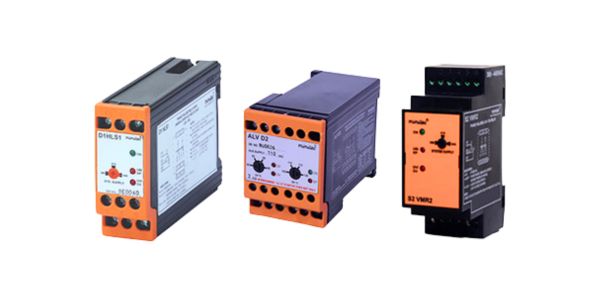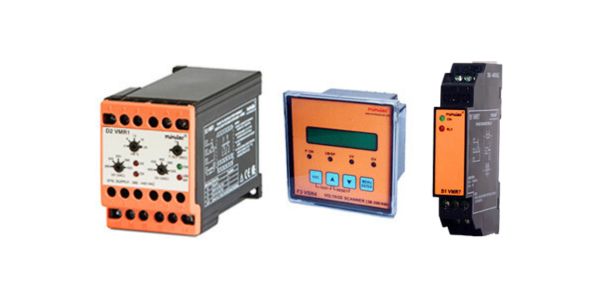Model
Voltage Sensing Phase Failure Relays
Voltage Sensing Phase Sequence Relay
Voltage Sensing Phase Failure Relays with Under and Over Voltage
Voltage Scanner
Phase Failure Relays
Phase Failure Relays
These relays are suitable for monitoring incoming 3-phase supply from Mains (Electricity distribution line). Being independent of load, they can be used for any HP/KW rating of load. These relays are suitable for monitoring incoming 3-phase supply from Mains (Electricity distribution line). Being independent of load, they can be used for any HP/KW rating of load.
FEATURES
- Fixed/adjustable unbalance settings
- Fixed/adjustable under voltage/over-voltage settings
- Fixed/adjustable trip delays
- Built-in or Separate Auxiliary supply
- Resetting Auto / Manual / Remote
- Output contacts : 1 CO or 2 CO
- Choice of enclosures (DIN-Rail, Flush, Plug-in)
- Models with Micro-Controller based design
- 2 Line Alpha-Numeric LCD display (For F3 VSR4 model)
- Serial Communication (RS 485) Port (for F3 VSR5 model)
- Use of SMD Technology
- User-friendly LED indications
PROTECTIONS / FUNCTIONS
- Phase Failure [Phase Loss/Single Phasing]
- Phase sequence reversal
- Voltage Unbalance
- Under Voltage
- Over Voltage
- Dry Run
ORDERING INSTRUCTIONS
- Product Family Name
- Model Name
- System Supply Voltage & Frequency
- Aux. Supply / Control Supply Voltage
Download
FAQs
A Phase Failure Relay is an electrical protection device that monitors the three-phase power supply to equipment. It detects problems like loss of a phase (single-phasing), reverse phase sequence and significant voltage imbalance, then disconnects the power to prevent motor damage. Minilec manufactures range of phase failure relays as per your requirements.
Three-phase motors are expensive. If one phase is lost while the motor is running, it will continue to operate on the remaining two phases, drawing excessive current and overheating. This can quickly lead to burnt windings and catastrophic motor failure.
The relay constantly monitors all three phases (L1, L2, L3). Its internal circuit checks for:
Presence: Is voltage present on all three phases?
Sequence: Are the phases in the correct order (L1-L2-L3)?
Balance: Is the voltage between phases roughly equal?
If any of these conditions fall outside safe parameters, the relay’s internal switch opens, de-energizing the control circuit and stopping the motor starter.
They are essential for protecting any critical three-phase machinery, including:
- Industrial motors (pumps, compressors, conveyors)
- HVAC systems (chillers, air handling units)
- Machine tools (CNC machines, lathes)
- Elevators and escalators
Installation involves working with high-voltage three-phase power. It must be performed by a qualified electrician to ensure it is wired correctly into the motor control circuit, typically between the contactor and the overload relay, for proper and safe operation.




